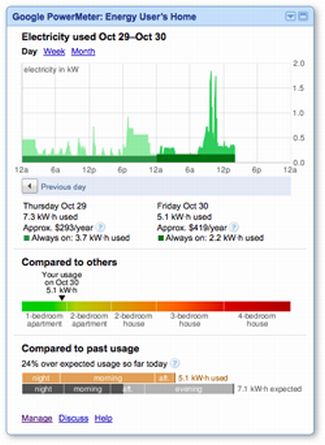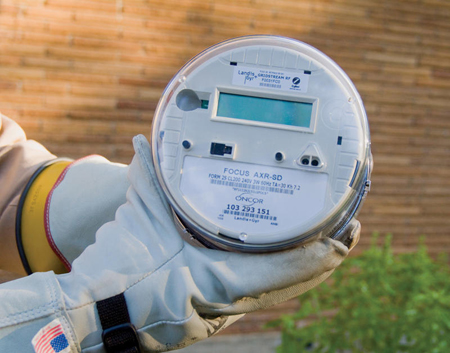American homes are notorious energy wasters, and for a while now, pundits have been predicting massive growth in the home energy management sector. More and more people, it seems, are looking for ways to save energy and money, and more and more utility companies, interested in reducing demand, are looking to help them do it. Add to that big players like Google, Microsoft and General Electric lining up to supply the interface technology, and what you’ve got is a boom-in-the-making.
Most home energy management tools are being developed for use by utility companies deploying smart grid and smart metering technology. These tools offer utilities the opportunity to give customers a “hands-on” window into their home’s energy use, as well as, in some cases, an online dashboard for selecting and automating energy-saving programs–much like a programmable thermostat, but with more options and more control.

One place where people are getting accustomed to using Google’s home energy management tool, the Powermeter, is within the service area of California’s San Diego Gas and Electric (SDG&E). April Bolduc, Communications Manager for SDG&E, told us that 1 million of the company’s 1.4 million customers now have smart electric meters–and with them, access to home energy information via the Google PowerMeter. (The utility has also changed out 680,000 of its 850,000 gas meters for smart meters.)
“Information is power,” Bolduc said. “In this case, the power to save energy and money.” She adds that research has shown that when people know how much energy they’re using, they tend to use 5 to 10 percent less. SDG &E’s goal is to help customers manage their costs (and help to reduce the utility’s need to build more power plants).

SDG&E chose the Google PowerMeter as an initial solution, as they plan to have their own online tool available to customers next year. “Some customers already have iGoogle accounts sohey tprefer Google PowerMeter to see their energy usage as a gadget on their iGoogle page every day,” Bilduc added, going on to note that when the new tool is ready, some customers will prefer to go to sdge.com to see their energy usage while others will prefer to keep using PowerMeter on their homepage.
Recently, the Texas utility Oncor signed on with the Ecofactor home energy management tool on their own massive smart grid roll out, offering its customers the ability to manage energy at home with EcoFactor’s online dashboard tool. Scott Hublou, co-founder and Senior Vice-President of Products at EcoFactor, told us that his company’s tool differs from the PowerMeter in that it does more than simply display information, it offers an automated energy management system.
“While having access to information is an important aspect,” he told us, “the reality is most consumers do not want to actively manage their energy use on a day-to-day basis.” He went on to note that EcoFactor’s approach is an automated HVAC energy efficiency system that allows homeowners to save money, largely, without altering their behavior–i.e., “making sacrifices in comfort and convenience.”
Still other home energy management systems are available on a do-it-yourself basis and do not require smart grid tech on the part of your utility, such as Energy Hub, and Onzo. Systems like this tend to make use of a system of wireless interfaces between appliances and electricity plugs, offering at-a-glance information either via a specialized display or an online dashboard, as well as highly specific remote control of electrical and/or HVAC systems.
Another option is the increasingly popular Microsoft Hohm system, which takes detailed information input by you, the homeowner (and, in some areas, automatic info-feeds from your utility company) to rate your home’s energy efficiency as compared to to other homes in your area. It also offers users personalized energy-saving recommendations based on advanced analytics licensed from the Lawrence Berkeley National Laboratory and the U.S. Department of Energy. Hohm is a web-based service, accessible from any Internet-enabled computer, and offers cost/usage information down to the minute and the dollar when used in conjunction with the Blue Line Power Cost Monitor, a Wi-Fi gateway that attaches to your electric meter to transmit usage information in real time.